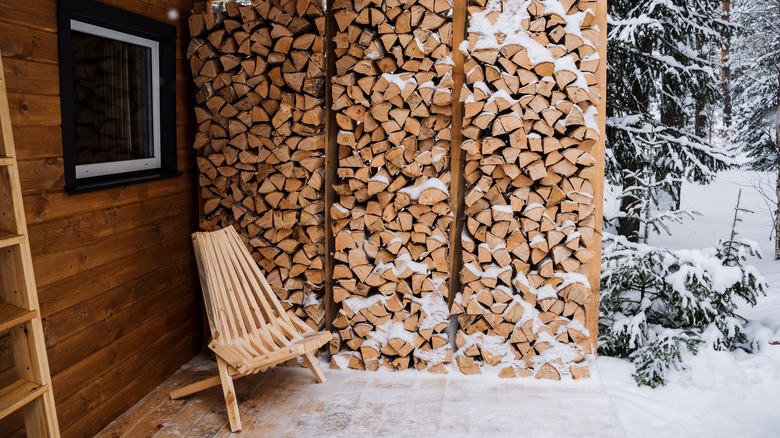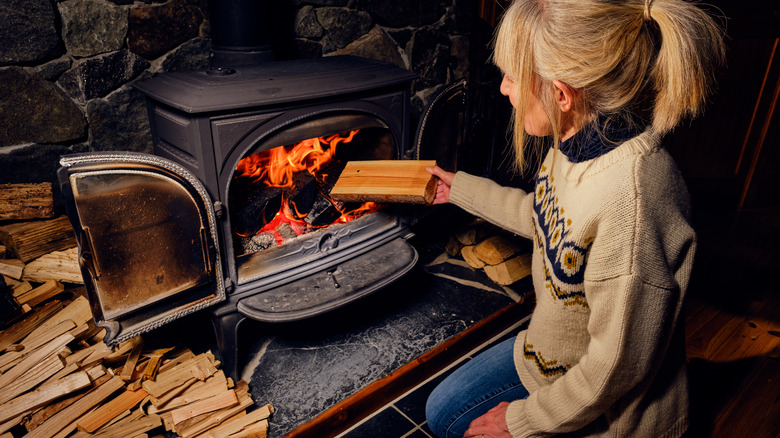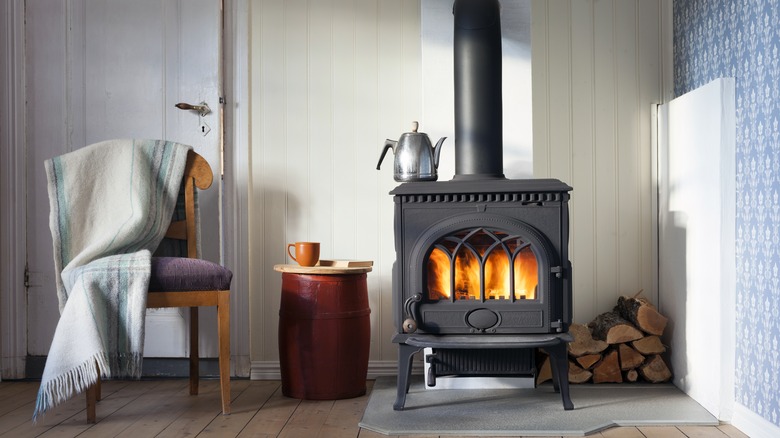How Much Firewood Do You Need For Your Woodburning Stove In Winter?
If you're new to using a woodburning stove full-time, or if you've recently replaced or upgraded an older stove, you probably have no way of knowing how much wood will get you through winter. There are lots of factors to consider, but the biggest is how harsh your winters are. One thing worse than getting up in the middle of a frigid night to throw another log on the fire is getting up in the middle of the night and finding that you're out of wood. So a good rule of thumb is that in the snowdrifts of the north, you'll need two to three cords of wood per 1,000 square feet of heated space for winter, while in milder mid-Atlantic or southern climates, you can get by with one or two cords per 1,000 square feet.
When a firewood salesman tells new woodburning stove owners that wood costs $150-500 or more per cord, they're often met with blank stares. What on earth is a cord of firewood, and how can the price range be that large? A cord is simply 128 cubic feet of tightly stacked firewood, an area of 4 feet by 4 feet by 8 feet. The average price of $300 per cord depends on the local availability of particular wood species, and that price is higher for hardwoods that burn more efficiently. These are estimates, so to avoid coming up empty-handed in the middle of the night, it's a good idea to buy extra wood if you have the budget and room to store it properly ... which includes never storing your firewood indoors.
Reasons you might need more or less firewood
Of course, rules of thumb are only precise if you're counting thumbs. For matters like estimating firewood, there are all sorts of variables that can affect that rule. Your personal preferences will affect it to some degree: Do you intend to heat your whole house or just a room? What temperature do you find comfortable in winter? It's also impacted by your skill at using a wood stove efficiently, something that comes with experience. More area and more warmth means more wood; more experience means less wood. Your home itself also influences the amount of wood you will need to burn: a properly insulated home with an efficient means of moving the heat around (fans, for example) will require less firewood, and of course you'll use less wood if you're supplementing the wood stove with another method of heating.
As we've already seen, your geographical area affects the amount of wood you need. Moving a few hundred miles south from frigid New England or Minnesota can drop firewood requirements by 25 to 50 percent. And of course, your wood choices and the particulars of your wood stove have an effect as well. Kiln-dried wood is more efficient but more costly, for example, and newer stoves tend to heat better. Let's take a closer look at the two key factors of a wood stove: the wood and the stove.
A closer look at your wood and your stove
It might surprise you how much of a difference your choice of firewood makes in how well it heats your home. Kiln-dried is better than normal seasoned wood, as we've said, but the kind of wood also makes a big difference. The heat output of wood, measured in millions of BTUs, varies significantly from species to species. Eastern red cedar anchors the low end at 13 million BTUs, and osage-orange is near the top at 32.9. The most common firewood species are cherry (20.4 million BTUs), walnut (22.2), maple (ranging from 19 to 25.5), oak (24.6 to 30.7), hickory (with a species average around 27), and apple (27).
You'll get the most out of a hotter-burning species of wood with a more efficient stove. Catalytic technology, EPA standards, and tax incentives have recently driven up the efficiency of wood stoves, which are best expressed as an HHV (higher heating value) efficiency, a number standardized for all heating equipment. Catalytic wood stoves and hybrids are the most efficient, with average efficiencies of 77 and 78 percent, respectively. Pellet stoves have an average rating of 74 percent, and non-catalytic stoves average 71 percent. More efficient stoves and higher-BTU wood species produce more heat (and less pollution) from a given amount of seasoned firewood, which means you buy less at the beginning of the season. The EPA has a database of wood stoves showing details like firebox volume, heat output, HHV efficiency, and type (catalytic, hybrid, etc.).


